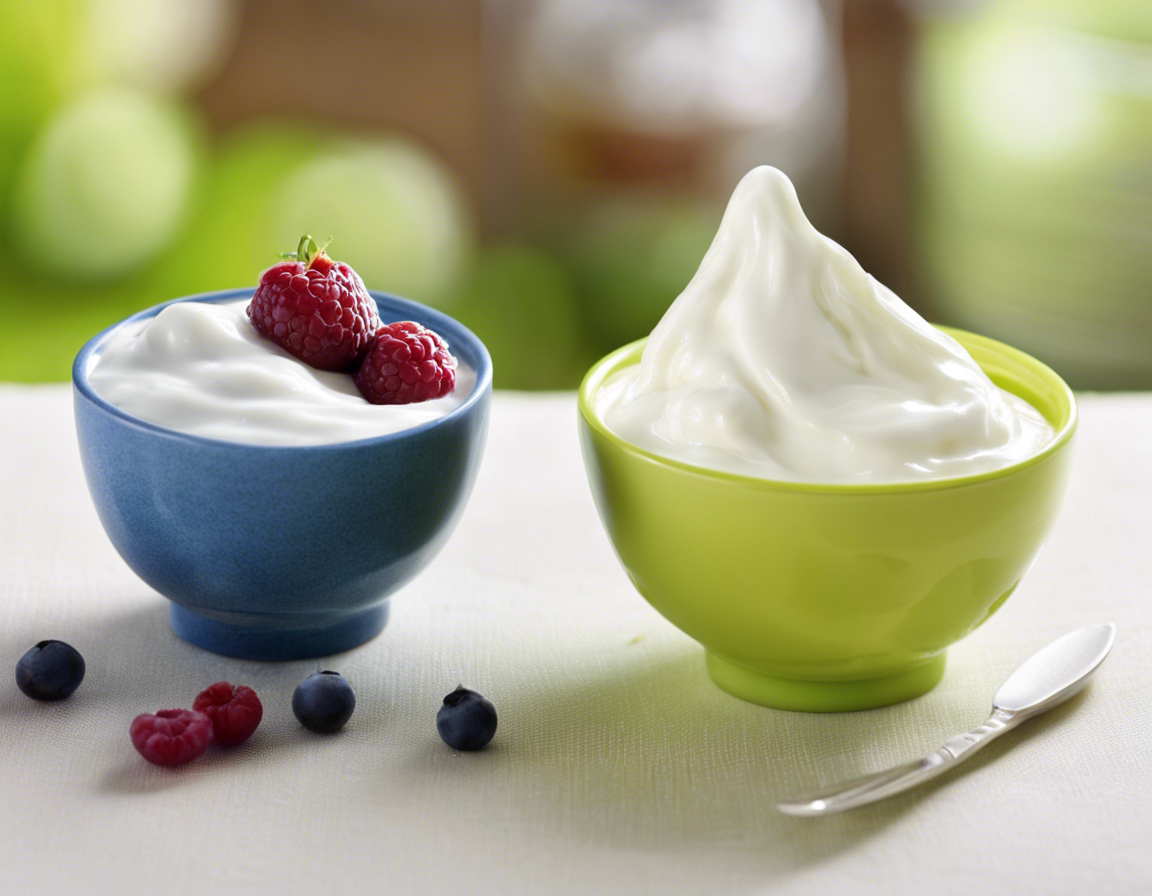Yogurt vs. Curd: What’s the Difference?
Yogurt and curd are two dairy products that are consumed worldwide and are loved for their taste and health benefits. While some people use the terms interchangeably, there are some key differences between the two. In this article, we will explore the distinctions between yogurt and curd, including their ingredients, nutritional content, health benefits, and culinary uses.
Ingredients
Yogurt: Yogurt is typically made by fermenting milk with two specific types of bacteria—Lactobacillus bulgaricus and Streptococcus thermophilus. These bacteria are responsible for the fermentation process that turns milk into yogurt.
Curd: Curd, on the other hand, is made by curdling milk with an edible acidic substance such as lemon juice, vinegar, or yogurt culture. The curdling process causes the milk to separate into solid curds and liquid whey.
Nutritional Content
Both yogurt and curd are excellent sources of nutrients like protein, calcium, potassium, and vitamins B12 and B2. However, there are some differences in their nutritional profiles:
-
Probiotics: Yogurt often contains probiotic bacteria, which are beneficial for gut health. These live cultures are added to the milk during the fermentation process and can promote digestion and boost the immune system.
-
Calcium: Both yogurt and curd are rich in calcium, which is essential for maintaining strong bones and teeth. Calcium is also important for muscle function, nerve signaling, and blood clotting.
Health Benefits
-
Digestive Health: Due to the presence of probiotics, yogurt is known for its positive effects on digestion. Probiotics help maintain a healthy balance of gut bacteria, which can improve digestion and reduce symptoms of digestive disorders like irritable bowel syndrome (IBS).
-
Bone Health: The calcium content in both yogurt and curd promotes bone health and helps prevent conditions like osteoporosis. Consuming these dairy products regularly can contribute to better bone density and reduce the risk of fractures.
-
Weight Management: Including yogurt or curd in a balanced diet can aid in weight management. The protein content helps you feel full and satisfied, reducing the likelihood of overeating.
Culinary Uses
Yogurt and curd are versatile ingredients that can be used in a variety of culinary preparations:
-
Yogurt: Due to its creamy texture, yogurt is often used in smoothies, dips, dressings, and marinades. It can also be enjoyed as a breakfast food with fruits, nuts, or granola.
-
Curd: In Indian cuisine, curd is commonly used to make traditional dishes like raita, lassi, and kadhi. It adds a tangy flavor and creamy consistency to these dishes.
FAQs
-
Is yogurt the same as curd?
While yogurt and curd are both dairy products, they are made using different processes and bacteria strains. -
Which is better for digestion, yogurt, or curd?
Yogurt is often considered better for digestion due to its probiotic content, which can help maintain a healthy gut flora. -
Can I substitute yogurt for curd in recipes?
Yes, you can usually substitute yogurt for curd in recipes, keeping in mind any differences in taste and consistency. -
Are yogurt and curd suitable for lactose-intolerant individuals?
Some yogurt and curd varieties are lower in lactose and may be better tolerated by lactose-intolerant individuals. -
How can I tell if yogurt or curd has gone bad?
Both yogurt and curd will develop an off smell and taste when they have spoiled. Mold or unusual texture changes are also indicators of spoilage.
Conclusion
In conclusion, while yogurt and curd share some similarities in terms of their nutritional content and health benefits, they are distinct dairy products with unique production methods and uses in cooking. Both can be valuable additions to a balanced diet, providing essential nutrients and contributing to overall health and well-being. Whether you prefer the creaminess of yogurt or the tanginess of curd, incorporating these dairy products into your meals can enhance both the flavor and nutritional value of your dishes.
